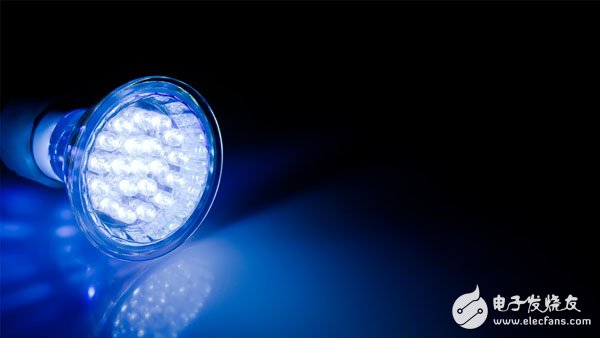With the gradual development of LED lighting fixtures, LED lighting fixtures have gradually replaced some traditional light source products in public places such as lighting engineering auxiliary lighting. In commercial applications where usage time is long, LED lamps have quickly become the new darling of the market, and the LED industry has developed rapidly in recent years. Among the global LED application fields, the general-purpose lighting and automotive lighting fields are the fastest-growing markets, and have become an important driving factor for the rapid growth of the LED market in the future. 1. Intelligent lighting: As the price of LED lighting products continues to decline, the LED lighting market is growing rapidly. Advances in technology have also led to the development of LED lighting technology from the initial simple lighting to smart lighting. Intelligent lighting not only enables intelligent control of lighting systems, but also becomes an entry point for the Internet, resulting in more value-added services such as health management, map positioning, merchandising and advertising. From traditional lighting to smart lighting, market demand is undoubtedly a powerful driving force for this move. It is undeniable that the development of intelligent lighting is the general trend. 2. Automotive lighting: China's automobile production and sales volume exceeds 20 million units, and it has ranked first in the world for five consecutive years. The huge automobile market has driven the development of related auto parts industry. The LED auto lighting market has grown more rapidly, and the growth rate far exceeds that of auto-related industries. Average growth rate. As of the end of 2015, automotive lighting needs to meet the carbon dioxide emission reduction targets. As a typical representative of low-carbon environmentally friendly lighting, LED is expected to be included in the scope of automotive lighting upgrades, which means that the market demand of 10 billion, or even hundreds of billions. However, due to the complexity of the environment in which LEDs are used, LEDs tend to be easily broken in actual use, in fact, because the characteristics of LEDs and the protection they deserve are not taken into account. Especially when the LED is used outdoors, its driving circuit and lamp bead are very susceptible to overvoltage and overcurrent, causing malfunction or damage, causing unnecessary property damage or even casualties. Therefore, LED lighting circuit is designed. It is necessary to fully consider and protect the equipment to improve the reliability of the circuit and reduce the failure rate. Instant lightning electronics has been committed to research and development in this area, from product development to system design, all do our best. The following is a brief discussion on the fault phenomenon, causes and solutions of over-current and over-current interference in LED lighting systems. First, LED overvoltage and overcurrent fault phenomenon When overvoltage and overcurrent disturbances occur, component performance may be impaired or damaged. Overvoltage and overcurrent damage to the LED components is independent of the number or duration of interference energy, as any overvoltage and overcurrent disturbances can cause LED damage. This damage can manifest as an immediate failure of the device or a long time after the overvoltage and overcurrent disturbances have occurred. The miniaturization of LED chips and the complication of the electrical structure of LED lamps are making this problem even worse. There are two main phenomena in the overvoltage and overcurrent faults of the LED chips in the luminaire: a, the chip internal welding line is damaged The first failure mode caused by overvoltage and overcurrent interference is damage to the weld line inside the LED package. This damage usually manifests as a broken wire. In addition, overvoltage and overcurrent disturbances can also cause damage to other materials (such as sealing materials or phosphors) that are close to the weld line. b, the chip pad position is damaged Another failure mode caused by overvoltage and overcurrent interference is that the position of the LED chip body near the pad is damaged. Second, the main cause of overvoltage and overcurrent interference in LED There are many reasons for overvoltage and overcurrent interference in LED chips, such as surge, static electricity, pulse signal interference from other equipment, improper working methods when the lamp is assembled, and insufficient grounding point, causing rapid switching of current and high voltage. Causes overvoltage and overcurrent interference. However, the following two situations are the main cause of overvoltage and overcurrent interference during the production and use of LED lamps. a, electrostatic discharge ESD Electrostatic discharge is an unavoidable risk in the production, transportation and processing of most electronic components. Although most of the current LED chips have anti-static interference design of 2kV, electrostatic discharge is still the main reason for the damage of LED chips in the production of lamps. b, short-term overload Short-term overload is the short-term LED input voltage or current exceeding its rated value such as surge voltage or lightning strike. Overloading generally lasts for only a very short period of time and typically does not exceed 500ms. A similar voltage or current is called a spike or spike current. Short-term overload is the main cause of damage to the LED chip during normal use of the luminaire. Safety Light Curtain,Safety Curtain,Laser Safety Light Curtain,Safety Optic Light Curtain,Security Light Curtain,Press Brake Safety Light Curtains Jining KeLi Photoelectronic Industrial Co.,Ltd , https://www.sdkelien.com
SDKELI has been manufacturing safety light curtains for more than 20 years. Its brand [SHANGSHOU" and [SDKELI" owns largest market share in China because of reliable quality and proper price. All the safety light curtains are type 4 with CE certificate.
December 31, 2020